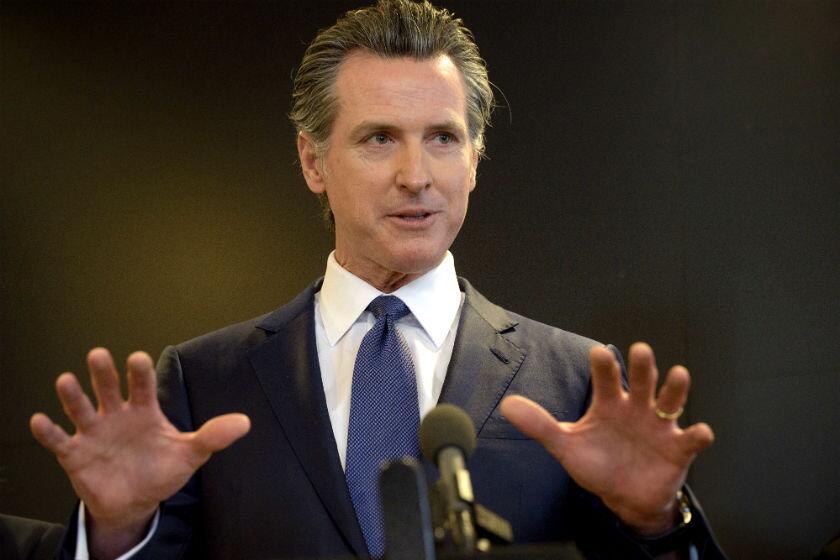Merchandise sales drive Pixar’s ‘Cars’ franchise
- Share via
When it comes to sequels, “Cars 2” flies in the face of conventional Hollywood calculus. Its predecessor was the least well-reviewed of Pixar Animation Studios’ 11 movies and among its poorest performers at the box office — at least, by the premier animation studio’s sterling standards.
One attribute distinguishes “Cars” from most other films: it sparked a licensing bonanza that continued to fuel merchandise sales long after Lightning McQueen, Mater and the movie’s other anthropomorphic autos rolled out of the megaplex. So animators at the Walt Disney Co.-owned studio got the green light to take a few more laps around the track — and introduce hundreds of new plane, train, boat and automobile characters — with “Cars 2,” which opens in theaters this Friday.
“This is not the movie that you would expect Pixar to make a sequel of — yet they are,” said Doug Creutz, a media analyst for Cowen and Co. “And the reason is it was a massive licensing success.”
In the five years since its 2006 release, “Cars” has generated global retail sales approaching $10 billion, according to Disney. That ranks the Pixar film alongside such cinematic merchandising standouts as “Star Wars,” “Spider-Man” and “Harry Potter,” as well as its own paean to playthings, “Toy Story,” according to researcher NPD.
No fewer than 300 toys — and countless other items, including bedding, backpacks and SpaghettiOs — are rolling out in stores, in anticipation of the “Cars 2” opening.
“We anticipate the consumer products program to be the largest in industry history, eclipsing the high water mark set by ‘Toy Story 3,’” Disney Consumer Products Chairman Andy Mooney said in a webcast last week before the annual toy licensing show in Las Vegas. Last year, the third installment of “Toy Story” generated $2.8 billion in merchandise sales.
Disney, like its Hollywood rivals, is spending mightily on potential film franchises that can reach beyond the box office to bring in cash — through licensed merchandise sales or other derivative forms of entertainment, such as theme park attractions, TV shows and interactive games. These sources of revenue hold growing importance at a time when production and marketing costs continue to rise and DVD sales continue to slump.
Big “event” movies and sequels such as “Toy Story 3” cost upwards of $350 million to make, promote and distribute worldwide.
Disney Chief Executive Robert A. Iger is directing most of the studio’s annual production budget on such high-profile films as this summer’s “Pirates of the Caribbean: On Stranger Tides,” on track to amass $1 billion in global ticket sales, and the upcoming releases “Winnie the Pooh” and “The Muppets” that have the potential to benefit other units of the company including consumer products.
Meanwhile, the entertainment giant has worked to sustain interest in its “Cars” franchise and characters in the years between movie releases, creating animated TV shorts, dubbed “Cars Toons,” which have aired 15 times a week on the Disney Channel and according to Mooney are watched by some 68 million children.
Iger told investors during the most recent Disney earnings call that he expects “Cars 2” to drive consumer products sales through the holiday season, as well as to create anticipation for next summer’s opening of a 12-acre Cars Land attraction at Disney California Adventure in Anaheim as the centerpiece of a $1-billion renovation of the park.
This week, Disney’s interactive division is releasing Cars 2: The Videogame, and the DisneyToon animation studio is developing a direct-to-DVD “Cars” spin-off, “Planes,” which is slated for release in 2013.
Mattel Inc. Chief Executive Robert Eckert has said that the movie’s potential global appeal and spy subplot present ample selling opportunities for the toymaker — which plans to introduce 70 new toy characters (not including race tracks) based on “Cars 2.” The company has designed and released more than 600 die-cast vehicles since 2006.
“Cars 2” presents a story of international espionage against the backdrop of a World Grand Prix race in which Lightning McQueen competes for the title in Japan, France, England and a fictional seaside city in Italy.
Foreign markets are crucially important for sales, not just of tickets but also of licensed merchandise. The fast-expanding economies of Brazil, Russia, India and China registered 23% growth in last year even as purchasing worldwide slumped 2%, according to the Licensing Letter, a publication that tracks industry trends.
“That’s why everybody’s looking at international,” said Ira Mayer, publisher of the Licensing Letter. Although these countries account for just 5% of worldwide licensed merchandise sales, “it’s pretty significant. That kind of rapid growth is probably not going to abate for a while.”
Pixar chief creative officer and “Cars 2” director John Lasseter, a devoted car buff and toy collector, recognizes that the cars and race courses in the two films naturally fit with how children play. By introducing the spy element in the sequel, he was able to add cool gadgets to the vehicles — and create even more merchandising opportunities. Every car in the movie — no matter how minor — has a name and a back story, in a nod to the fans who have continued to collect the toy cars.
“The toy sales have actually gone up every year since the movie came out, and that’s all over the world,” Lasseter said in an interview. “The products are really a manifestation of the love of those characters ... and are a way that collectors, kids, families, can have the characters be with them beyond the boundary of the film.”
More to Read
Inside the business of entertainment
The Wide Shot brings you news, analysis and insights on everything from streaming wars to production — and what it all means for the future.
You may occasionally receive promotional content from the Los Angeles Times.










